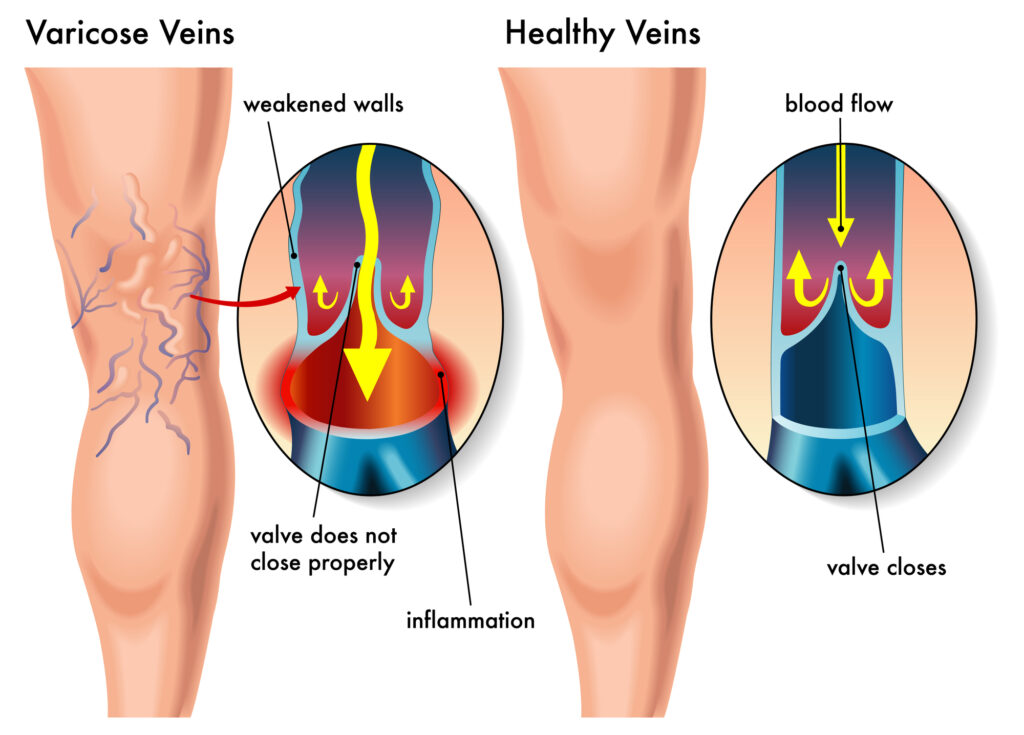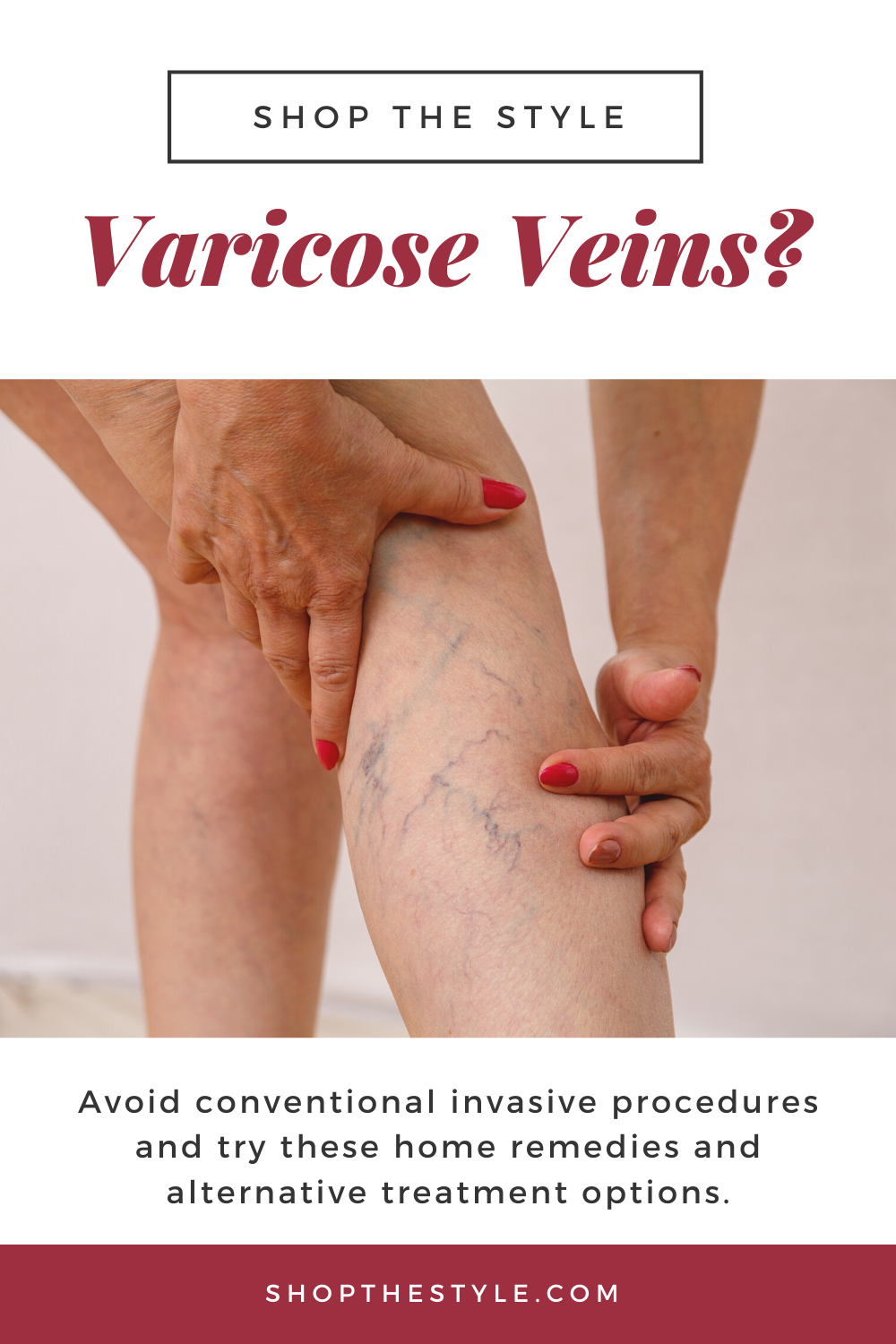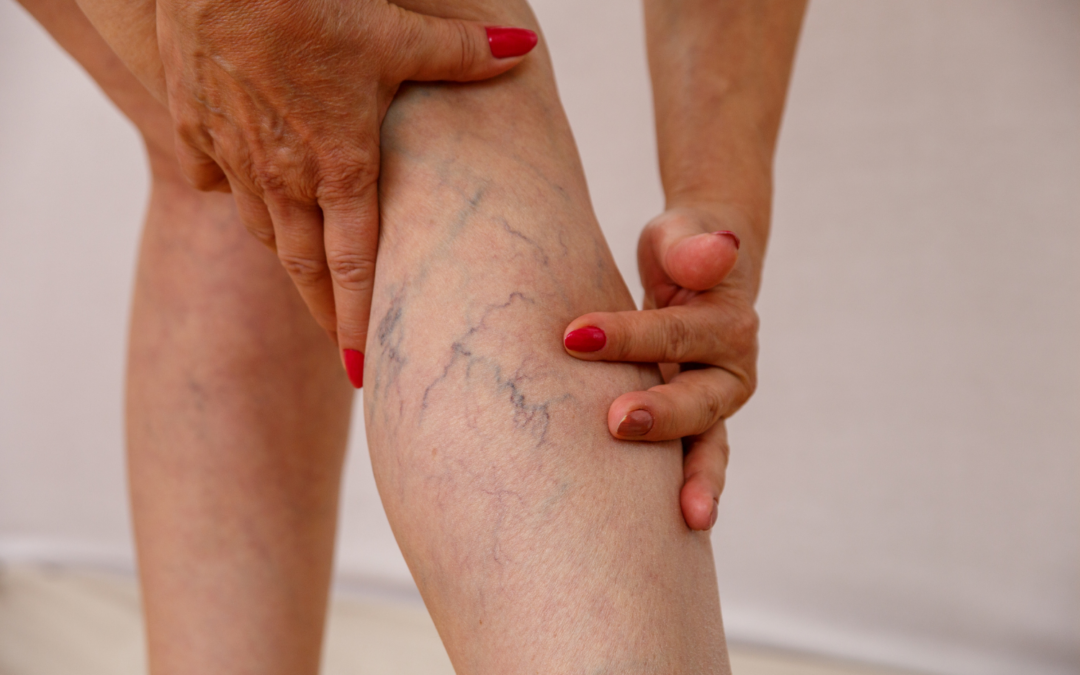Varicose veins are a common and sometimes painful problem. Conventional treatment often involves invasive procedures, something many people would like to avoid. Therefore we have researched ways to treat varicose veins with home remedies and alternative treatments.
Varicose veins are dilated, twisted veins that are usually located on the lower extremities. They can also occur on the vulva, around the spermatic cords (varicoceles), in the rectum (hemorrhoids), and in the esophagus (esophageal varices).

Image courtesy of Deposit Photos
Ten to twenty percent of men develop varicose veins sometime during their lives, and up to one-third of women are affected. For reasons that aren’t clear, women report symptoms more often than men.
Once conservative treatment measures have failed—and they often do when varicose veins are truly symptomatic—medical management usually involves the use of invasive or expensive modalities (or both). Although such methods offer benefit, there doesn’t seem to be much middle ground for dealing with this common condition.
Even if an individual submits to one of several available treatments, it is quite possible that varicose veins will recur—or occur in a different location. The need for repeated visits to a physician can get tedious and frustrating.
Medical management of varicose veins includes conservative measures (weight loss, avoidance of prolonged standing, exercise, elevation of the affected extremity, compression hose or support stockings), external laser therapy, injection sclerotherapy, endovenous procedures, and surgery.
Contents [hide]
Alternative Treatments for Varicose Veins
Many non-medical treatments for varicose veins—herbs, homeopathy, ayurvedism, reflexology, massage, and aromatherapy—have become a part of popular culture and folk medicine. Few controlled trials have evaluated the effectiveness or safety of most of these approaches, but years of application and anecdotal evidence support their use and attest to their safety.
Herbal Treatments for Varicose Veins
Many herbs can be applied topically as well as taken orally. The advice of an herbalist and/or physician should be sought before using any herbal preparation.
- Horse chestnut extract: One of the most popular herbs for treating varicose veins, both topically and systemically. Oral horse chestnut extract improved the signs and symptoms of varicose veins when compared to placebo.
- Oligomeric proanthocyanidins (OPCs): Found in pine bark and grape seed extracts, these antioxidants—specifically those found in Pycnogenol, a pine bark product—have proven beneficial for healing venous leg ulcers when applied topically. They can also be taken internally.
- Butcher’s broom: A member of the lily family, this herb contains ruscogenins, which are believed to strengthen the connective tissue of the vessel walls.
- Witch hazel, yarrow, white oak bark, prickly ash, etc.: These herbs act as astringents that shrink inflamed tissues or stimulants that increase circulation.
Herbal Tea for Varicose Veins
- Mix three parts (cupfuls, handfuls, teaspoons, etc.) hawthorn berries, two parts yarrow, one part ginger, and two parts prickly ash bark.
- Place two tablespoons of mix in one cup of boiling water (use a tea ball).
- Add 30 drops of horse chestnut extract.
- Steep 15 minutes. Drink three times daily.
Herbal Liniment for Varicose Veins
- Mix one part yarrow, one part shepherd’s purse, one part calendula, and a dash of cayenne in a lidded jar; cover with witch hazel extract.
- Let stand in cool, dark place for two weeks.
- Strain and rebottle.
- Apply the mixture liberally to the affected area three or four times everyday.
Aromatherapy for Varicose Veins
While the benefits of aromatherapy are questioned by most Western physicians, its proponents swear by it. After all, smells evoke powerful responses, and many essential oils used in aromatherapy have also found use as topical or systemic healing agents.
Lavender, rosemary, chamomile, geranium, and other essential oils have been used for treating varicose veins. Usually, they can be applied to the area surrounding or directly over the affected area. As the oils warm, their essence is aerosolized.
Aromatherapy Oil for Varicose Veins
- Mix 12 drops each of essential oils of lavender, geranium, and cypress in four ounces of almond or sunflower oil.
- Gently massage into the skin around the varicose vein, avoiding pressure on the vein itself.
- Inhale deeply. Enjoy.
Other Modalities for Treating Varicose Veins
Home remedies and alternative treatments for varicose veins focus on alleviating symptoms and preventing further progression of the condition. However, it’s important to remember that these methods are not substitutes for professional medical advice or treatment. Here are some common home remedies and alternative treatments:
- Exercise: Regular physical activity improves blood circulation in the legs, which can reduce the pain and swelling associated with varicose veins.
- Compression Stockings: Wearing compression stockings provides gentle pressure on the legs, helping veins and leg muscles move blood more efficiently.
- Elevate Your Legs: Elevating your legs above your heart can improve circulation, reduce swelling, and relieve pain.
- Dietary Changes: A diet high in fiber can reduce the risk of constipation, which can contribute to varicose veins. Reducing salt intake can minimize swelling caused by water retention.
- Flavonoid-Rich Foods: Consuming foods high in flavonoids (like vegetables, fruits, and cocoa) can help improve blood circulation and reduce symptoms.
- Herbal Remedies: Herbs like horse chestnut, grape seed extract, and witch hazel are often touted for their potential benefits in improving circulation and reducing swelling.
- Hydrotherapy: Alternating between warm and cold baths can stimulate blood flow and reduce inflammation.
- Massage: Gentle massage can help facilitate blood flow through the veins, but avoid direct pressure on the veins themselves. Massage, when performed by a qualified practitioner, has been reported to improve the symptoms of varicose veins.
- Avoid Prolonged Standing or Sitting: Taking breaks to move around if you need to stand or sit for long periods can help in blood circulation.
- Yoga: Certain yoga poses, particularly those that elevate the legs, can improve circulation and may alleviate symptoms.
- Homeopathy—in the hands of an experienced practitioner—may be useful for some individuals. Homeopathic preparations commonly used include Hamamelis, Pulsatilla, Arnica, Aconite napellus, Belladonna, and Mercurius sol.
- Reflexology: This involves applying pressure to specific points on the feet, which some believe can improve blood circulation and alleviate symptoms.
- Juice Therapy: Drinking juices made from anti-inflammatory fruits and vegetables might help reduce swelling and improve overall vascular health.
- Systemic Cleanse: Detoxification diets or cleanses are believed by some to improve the body’s circulatory system health, though scientific evidence supporting this is limited.
Remember that these treatments may not be effective for everyone, and varicose veins can sometimes indicate underlying health issues. Always consult with a healthcare professional before starting any new treatment for varicose veins, especially if you have any health conditions or are pregnant.
Conclusion
Varicose veins are a common and often troublesome problem. For those not wishing to embark immediately on a medical program—or for those seeking a pleasant addition to their medical treatment—alternative therapies might fill a useful niche.



